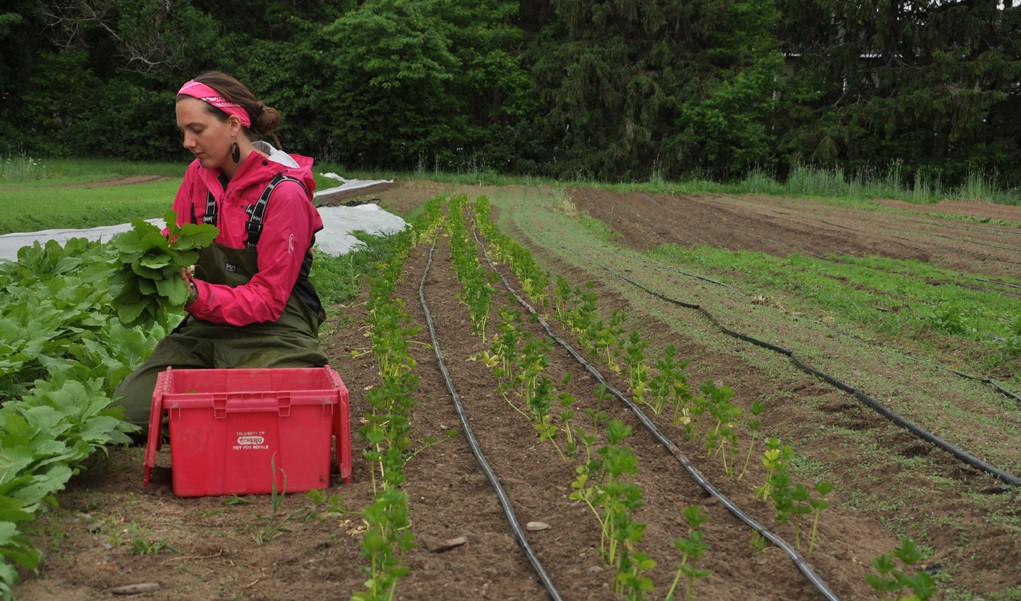Ingrid Barcelo, PhD, is a researcher at heart.
The Girona, Spain, native, arrived at UVM shortly after earning her doctorate from the University of Nebraska, Lincoln. On any given day, she can be found in her office at the Aiken Center, tracking more than 60 grants for faculty in the UVM Rubenstein School of Environment and Natural Resources.
Just a few years ago, Barcelo was tracking something entirely different: Sandhill Cranes in Mexico’s Chihuahuan Desert.
Barcelo attended the University of Girona to study environmental sciences and then worked as a biologist for the United Arab Emirates government. After earning her master’s degree at Edinburgh Napier University in Scotland, she was awarded grant funding from the University of Nebraska to study the winter ecology of Sandhill Cranes in northern Mexico.
Sandhill Cranes are a widespread species in North America and one of the most studied cranes in the world. However, until Barcelo’s research, most of the studies were focused on the breeding grounds of Canada and Alaska, as well as the staging grounds of Nebraska. There was little information on the distribution, status, and ecology of the species in Mexico.
“Cranes would stop in Nebraska on their way to Alaska because they love the corn. They would feed nonstop and put the weight back on that they had lost in Mexico,” she says. “But we didn’t know how the cranes were surviving winter, and we didn’t know exactly where they were spending the winter.”
Barcelo, who earned her doctorate in 2013, was an ideal candidate for the research. She spoke Spanish and had experience working with birds, insects, and reptiles in desert landscapes while she was a biologist in the Middle East.
During her research, she spent her winters in Mexico’s Chihuahuan Desert, often driving 3,000 kilometers per month to follow Sandhill Crane movements. Barcelo would usually find the birds in wetlands and remote areas of the desert. She collected field data and biological samples to study the birds’ hormones and diet in relation to landscape conditions.
“Based on their hormones, I could tell the birds were stressed,” she recalls.
Barcelo’s research was the first study to measure the effects of environmental conditions on the physiological state of cranes in the wild. She showed that the physiological stress level of Sandhill Cranes in Mexico is mainly affected by limited water resources and shrinking wetlands at their wintering sites.
Assisting with Research Funding at UVM
Today, Barcelo is married to UVM Associate Professor James Murdoch, a native Vermonter and chair of the Wildlife and Fisheries Biology Program at the Rubenstein School of Environment and Natural Resources. Barcelo taught ornithology—the study of birds—as a UVM lecturer for two years, and was later hired as a USDA McIntire-Stennis research coordinator and pre-award specialist for Rubenstein. She helps faculty, who are applying for competitive grants from the federal government, the state of Vermont, and nonprofit organizations, navigate the process.
“The thing I enjoy the most about my job is working with faculty and bridging the research piece with the admin side,” she says. “My situation is unusual as I’m an administrator that comes from a research background. But it gives me a different perspective and I understand what is needed to complete a project. Now I contribute to research in a different way.”
Barcelo continues to do some birding in her spare time.
“I still read about my previous world, and I still try to publish. But it’s more of a hobby than a means of living at this point,” she says. “What I really like is working in an academic environment. I’ve been linked to academics for so long, and that’s what I really enjoy doing.”
-The “UVM Is” series celebrates University faculty, educators, and the campus community.
To learn more, visit UVM Continuing and Distance Education at learn.uvm.edu.




